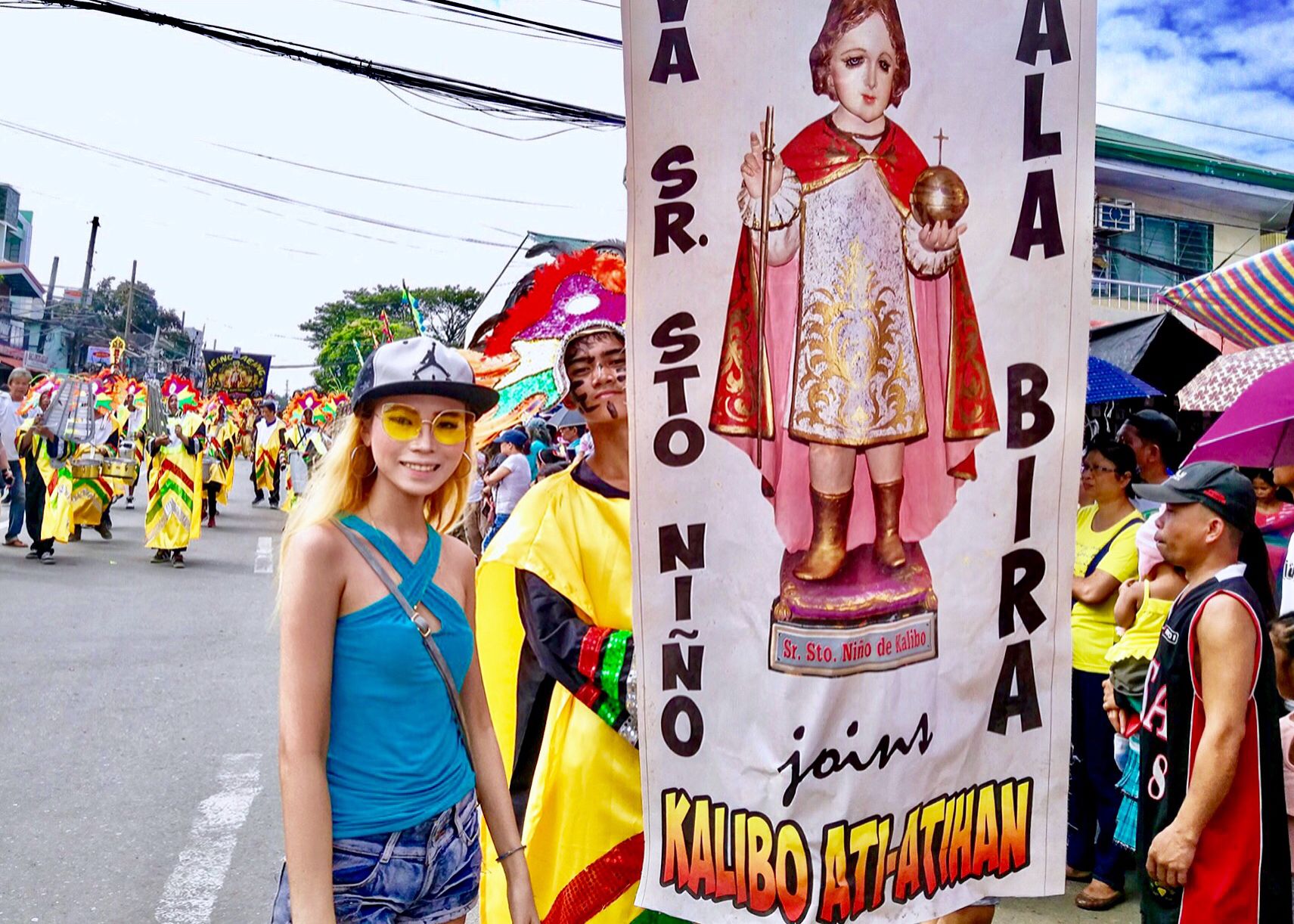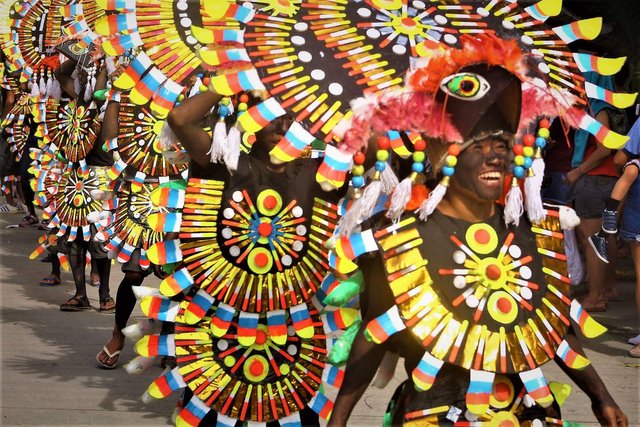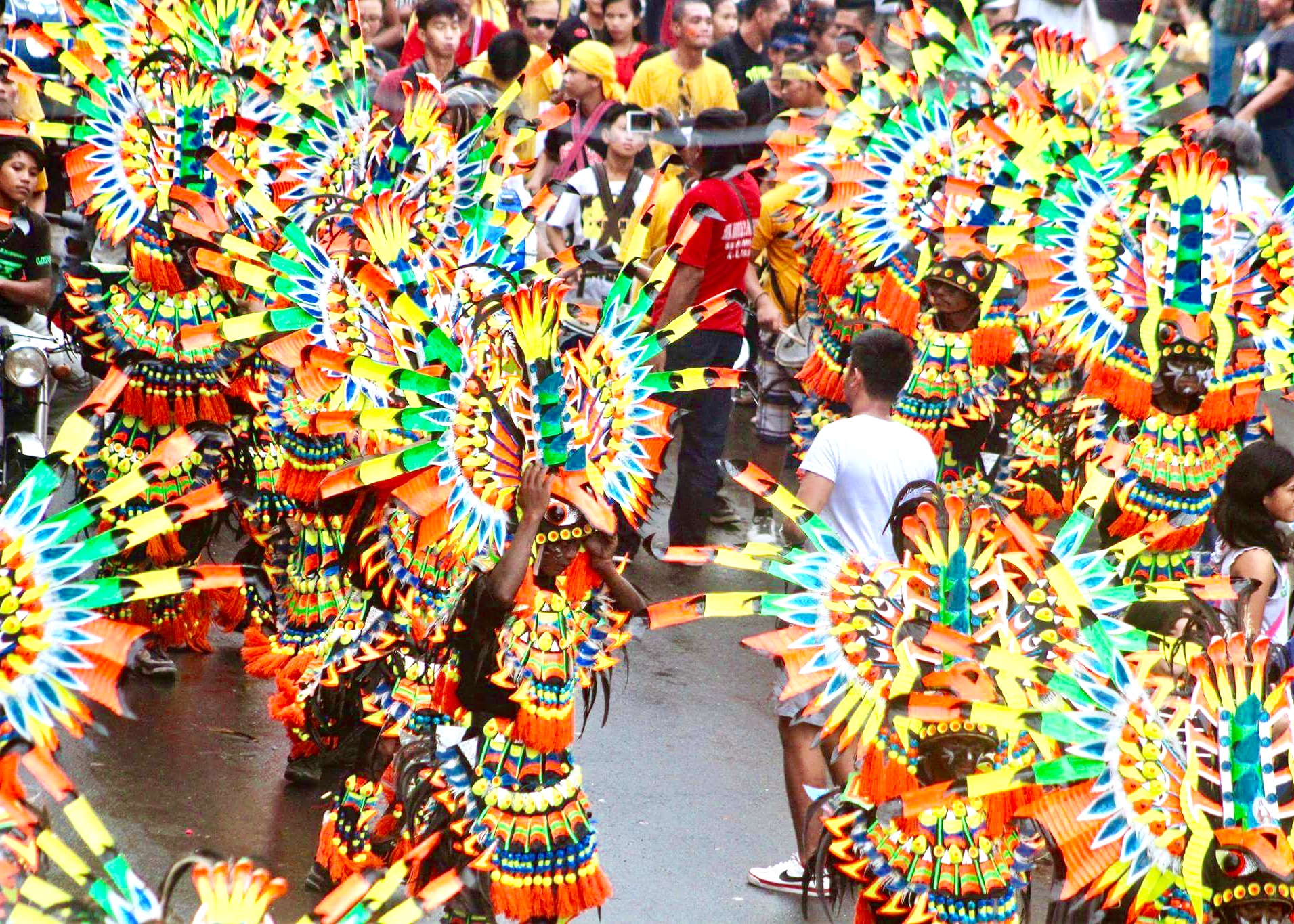Hala Bira! : Kalibo’s Ati-Atihan Festival
Filipinos are among world’s most religious. No matter what beliefs they embrace and religious affiliations they have, the church and their faith have always been their pillars of strength and highly regarded for support and guidance. Throughout the year, they evince their creed through celebrations honoring patron saints and other momentous events in the church. This deluge of devotion visibly showcases the high place of religion for most Filipinos.

Religion plays a much more significant role than just a central ethic. It is the very thread that binds an entire host of experiences and rituals that provide cohesiveness in the Filipinos’ way of life. The most notable in this connection where they show their extraordinary faith is at the very onset of the year, by commemorating one of the most important events in the life of the only begotten Son of God: the feast of the Santo Niño — the representation of Jesus as a child.

Fiestas reflect Filipinos’ religion and faith. For many Filipinos, a festival or fiesta is an integral part of the Philippine culture. From small remote villages to bustling metropolitan cities, almost every region of this tropical archipelago celebrates a colorful and vibrant festival every year. As part of their traditions, fiestas are celebrated to pay homage to their patron saints, mark their local history’s special happenings, as well as to give thanks for good catch and harvest.

Festivals are reminders of their past; it gives them a glimpse of their rich cultural heritage and at the same time connects them to their families and loved ones. During festivals, a mass, processions, vivid street parades, beauty pageants, live music and many other merry-making festivities are prepared to bring all the whole community together, to express gratitude to God. What’s more, a fiesta is a venue to showcase the different products and cuisines unique to the country. Such occasions draw many balikbayans (Filipinos who have been living overseas for an extended period of time) to return home and reminisce the good old times.

A well known symbol of the province of Aklan is their annual Ati-Atihan Festival. With bright colors, non-stop revelry and sheer exuberance, Ati-Atihan is one festival that demands all of your attention! It is undoubtedly the most important event in the Aklanon calendar. Held at Kalibo, this iconic event has become an essential tradition for locals and tourists alike. This animated festival offers a special cultural experience — from multicolored processions to mouth-watering food, truly a feast for the senses! It’s a festival not just to celebrate their lifestyle, but also to inspire people to live a life of happiness.

The town of Kalibo is the capital of the province of Aklan, one of the four provinces comprising the island of Panay — the sixth largest island in the Philippines. The tradition is said to have emerged from the coexistence of two vastly different groups of people. In the thirteenth century, long before the Spaniards came to the Philippines, the Malays — light-skinned migrating group from the island of Borneo (Kalimantan) in Indonesia arrived on Panay, desperately looking for a new home after making a precarious escape from their crumbling empire. The local people of Panay, the Aetas— a small, dark-skinned and kinky-haired people, agreed on a trade of precious Malayan items in exchange for a small piece of land and permitted them to settle down on the island. The Aetas lived in the mountain or elevated regions, while the Malays inhabited the flatlands or close to the water.

The festivity started at the outbreak of the dry season. One day, the Ateas were in need of food because of a bad harvest. They came down to the Malays and asked for food. Without hesitation, the lowlanders who had a good harvest shared their blessings. The Aetas danced and sang in gratefulness for the helping hands. Since then, a real friendship was born. The Malay immigrants and the Aetas marked the pact with an outburst of music and an overflow of food and drink.

To further cement intentions for the union of the two tribes, the Bornean refugees covered their skin in soot in an attempt to imitate the appearance of their dark-skinned hosts. The gesture of homogeneity towards the Aetas was warmly received by the natives, sparking a yearly celebration between the two tribes. Despite an inhibiting language barrier and their distinctly unassociated backgrounds, cultures and traditions, the two tribes managed an agreement of peace and prosperity.

The name Ati-Atihan means "to be like Atis" or "make-believe Atis". Aetas are known colloquially as Atis. The Ati-Atihan Festival is a week-long celebration that culminates on the third Sunday of January, with several events leading up to grand finale held over the weekend. The festival prides itself on its family-friendly, joyous spirit and has an entire day devoted to activities which allow the entire family to be involved in this fun celebration. Festival goers take to the streets smeared in soot and body paints for the street dance from morning until the evening, and afterwards capping the day off with parties that last till dawn. This is the normal routine everyday for the entire week of the festival, growing more and more intense towards the last day.

Ati-Atihan is not a festival you attend to simply be an observer. This is the kind of festival that whisks you away into its delightful chaos. Unlike many other festivals where attendees stand as onlookers on the sidelines, the Ati-Atihan allows and even encourages people to be part of the celebration. It is surprising how even those facing many problems in their day-to-day life set them aside and participate in this festivity.

The key activity and one of the main reasons tourists gather to Kalibo is the native dance competitions of participating tribes in full gear accompanied by primitive rhythm of drumbeats. Competitors are dressed in vivid costumes, masks and headdresses, and their bodies are smeared with grease or ashes to turn up like the native Aetas. The parade, which strictly disallowed choreographed dancing to honor the celebration’s tradition of individual expression, was a fantastic display of originality, grace and undeniable energy and rhythm.

The constant pounding of drums sends you on the street, stamping your feet, shaking your head, waving your hands and joining thousands of revelers in an ancient ritual of mindless happiness. Make sure to go with loads of energy! If you want to party with the locals, you have to party like them, too!

Above it all, the excited babbles and laughter of people meeting up, exchanging of drinks is an experience not to be missed! Don’t be hesitant to delve into the tireless merrymaking. However, don’t forget to keep safe, too. While drinking is a part of the jollification, know your limits and consume responsibly. Remember, you’ll be in a public place surrounded by a crowd of people — adults and kids alike.
Hala bira! Pwera Pasma! Let this be your grand welcome into the New Year! Don’t miss the chance to witness the Ati-Atihan Festival on January 2019. Come on and let the good times roll! 🎉🥂
Ati-atihan is something like a Sinulog here in Cebu. But I guess there were many amazing talented dancers out there how I wish I can see their videos in youtube to witness their performances.
About the religion , yes indeed Filipinos are more on in religion and they also give importance to Fiestas by making some "handa" and even some "kalingawan" in order to make it felicitous.
You are right, Jade! Thanks for dropping by. 😉
Congratulations @belvaj! You have completed some achievement on Steemit and have been rewarded with new badge(s) :
Click on any badge to view your own Board of Honor on SteemitBoard.
For more information about SteemitBoard, click here
If you no longer want to receive notifications, reply to this comment with the word
STOPWow... Great festival
Mao ni ang daghan nagpa picture nimo Belvs? Ahahaha!
Hahaha! Wala jud. 😝